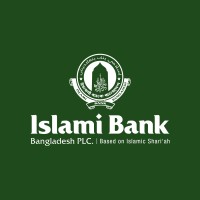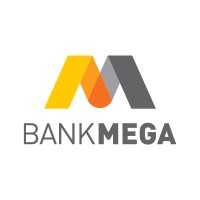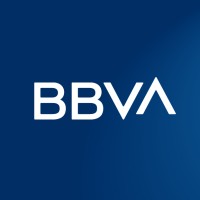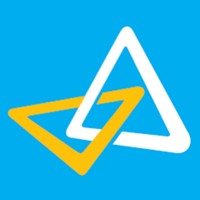Company Cyber Security Posture
NANA
NA Company Details
NA
NA
NA
NA
NA
NA
Scan still pending
NA
NA
Between 200 and 800
This score is AI-generated and less favored by cyber insurers, who prefer the TPRM score.
 NA Global Score
NA Global Score.png)

Company Scoring based on AI Models
| Model Name | Date | Description | Current Score Difference | Score |
|---|---|---|---|---|
| AVERAGE-Industry | 03-12-2025 | This score represents the average cybersecurity rating of companies already scanned within the same industry. It provides a benchmark to compare an individual company's security posture against its industry peers. | N/A | Between 200 and 800 |
Company Cyber Security News & History
| Entity | Type | Severity | Impact | Seen | Url ID | Details | View |
|---|
Company Subsidiaries

NA
Access Data Using Our API

Get company history
.png)
NA Cyber Security News
Akbank takes a snap to verify customers with Daon
Akbank in Turkey is now using Daon's IdentityX solution to enable customer authentication via facial recognition. daon-180x180.png. IdentityX.
Attempted Cyberattack Cost Turkish Bank $4M
In international cybersecurity news, a hack was attempted of Akbank in Turkey.
Akbank out of service for hours, users question whether it was hacked
Users of Turkey's Akbank have been infuriated due to the bank being out of service for more than a day, prompting rumors of a possible cyber ...
Artificial intelligence technologies become key to investment
Artificial intelligence (AI) technology has become a pervasive concept, impacting every sector globally. As technology ventures strive to ...
Magdalena Abakanowicz show at Akbank
Magdalena Abakanowicz, a Polish sculptor born in 1930, is participating in Akbank's latest exhibition with works that question the odyssey of man.

NA Similar Companies

Islami Bank Bangladesh PLC
Islami Bank Bangladesh PLC (IBBPLC) is the largest commercial bank of Bangladesh. It is the first Shariah-based Islamic bank in the South-East Asia established in March 1983. The Bank is a joint venture Public Limited Company with majority shareholding by foreign institutions and enlisted with Dhak

BPER Banca
Da 150 anni scegliamo di crescere insieme alle persone che ci danno fiducia, nel territorio e per il territorio. BPER Banca oggi è una banca solida perché, forte delle proprie radici, è stata in grado di adattarsi ai cambiamenti facendone il proprio punto di forza. Dal 2009 ad oggi abbiamo affronta

Bank Mega
Perjalanan Bank Mega berawal pada tahun 1969, dengan nama PT Bank Karman di Surabaya. Kemudian bertransformasi menjadi Mega Bank pada tahun 1992, dan berpindah lokasi ke Jakarta. Pada tahun 1996, Chairul Tanjung dengan PARA GROUP, yang kini dikenal dengan CT Corpora, mengambil alih dan membuat gebra

BBVA
At BBVA we are leading the transformation of banking worldwide, united in pursuing our goal of bringing the age of opportunity to everyone. Firmly focused on the future, our on-going digital transformation is already producing disruptive innovations that power our vision of banking. Every one of o

State Bank of Travancore
State Bank of Travancore, the premier bank of Kerala, God's own country occupies the number one position among the public sector banks in number of branches and total business in Kerala. The Bank has uninterrupted profit making since inception. The Bank targets a business level of Rs.1,00,000 cror

Canara Bank
Widely known for customer centricity, Canara Bank was founded by Shri Ammembal Subba Rao Pai, a great visionary and philanthropist, in July 1906, at Mangalore, then a small port in Karnataka. The Bank has gone through the various phases of its growth trajectory over hundred years of its existence. G

Frequently Asked Questions
Explore insights on cybersecurity incidents, risk posture, and Rankiteo's assessments.
NA CyberSecurity History Information
How many cyber incidents has NA faced?
Total Incidents: According to Rankiteo, NA has faced 0 incidents in the past.
What types of cybersecurity incidents have occurred at NA?
Incident Types: The types of cybersecurity incidents that have occurred include .
Additional Questions
What Do We Measure?
















Every week, Rankiteo analyzes billions of signals to give organizations a sharper, faster view of emerging risks. With deeper, more actionable intelligence at their fingertips, security teams can outpace threat actors, respond instantly to Zero-Day attacks, and dramatically shrink their risk exposure window.
These are some of the factors we use to calculate the overall score:
Identify exposed access points, detect misconfigured SSL certificates, and uncover vulnerabilities across the network infrastructure.
Gain visibility into the software components used within an organization to detect vulnerabilities, manage risk, and ensure supply chain security.
Monitor and manage all IT assets and their configurations to ensure accurate, real-time visibility across the company's technology environment.
Leverage real-time insights on active threats, malware campaigns, and emerging vulnerabilities to proactively defend against evolving cyberattacks.




